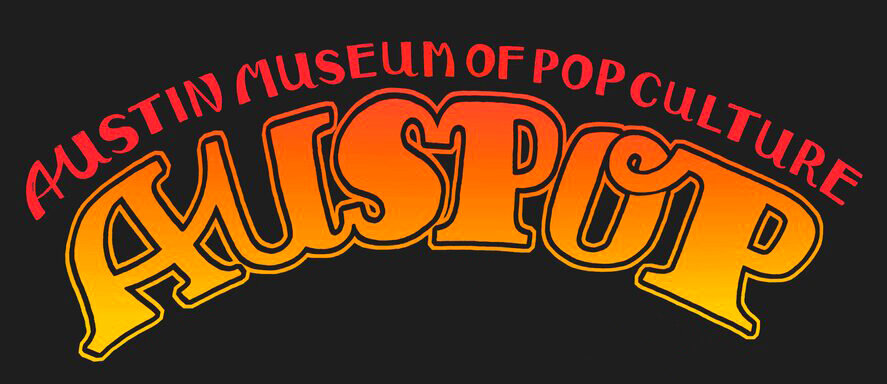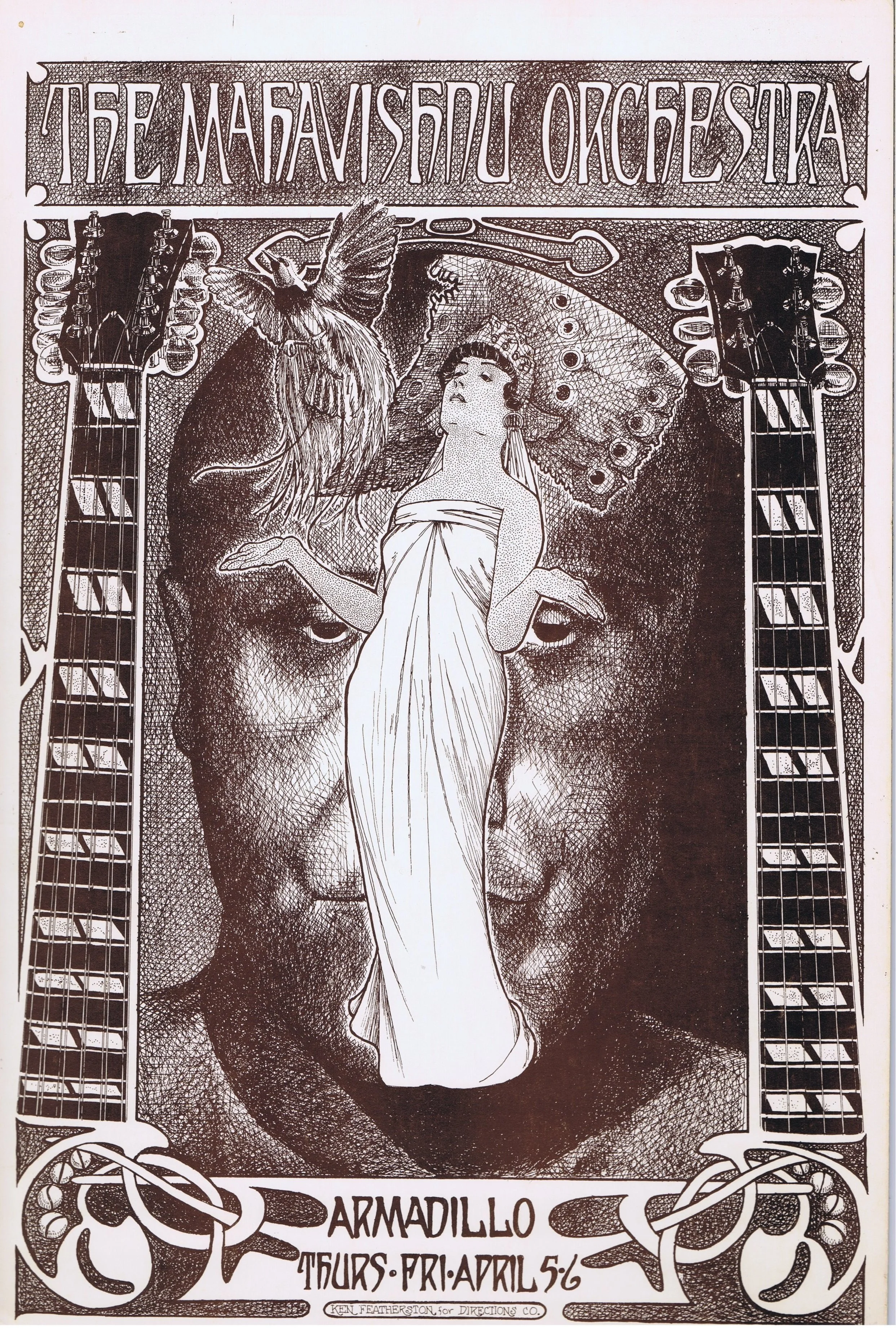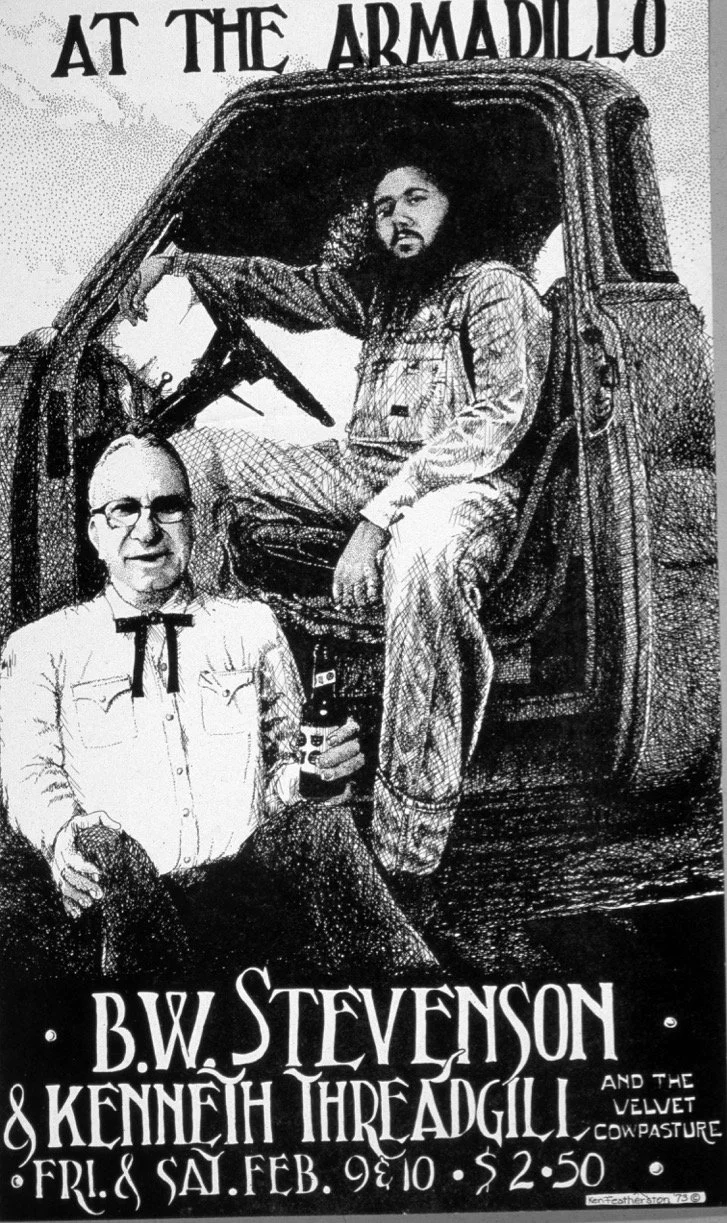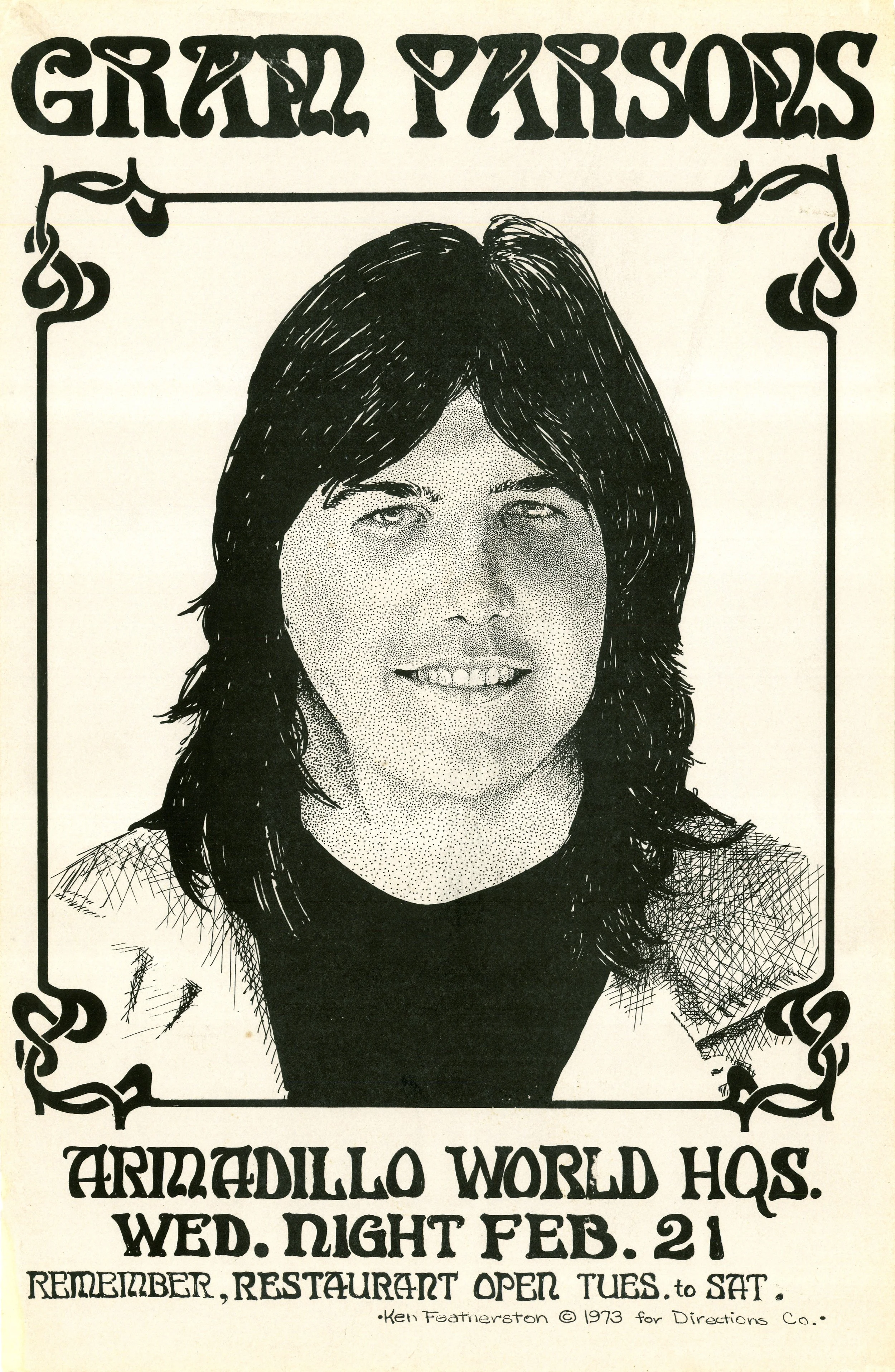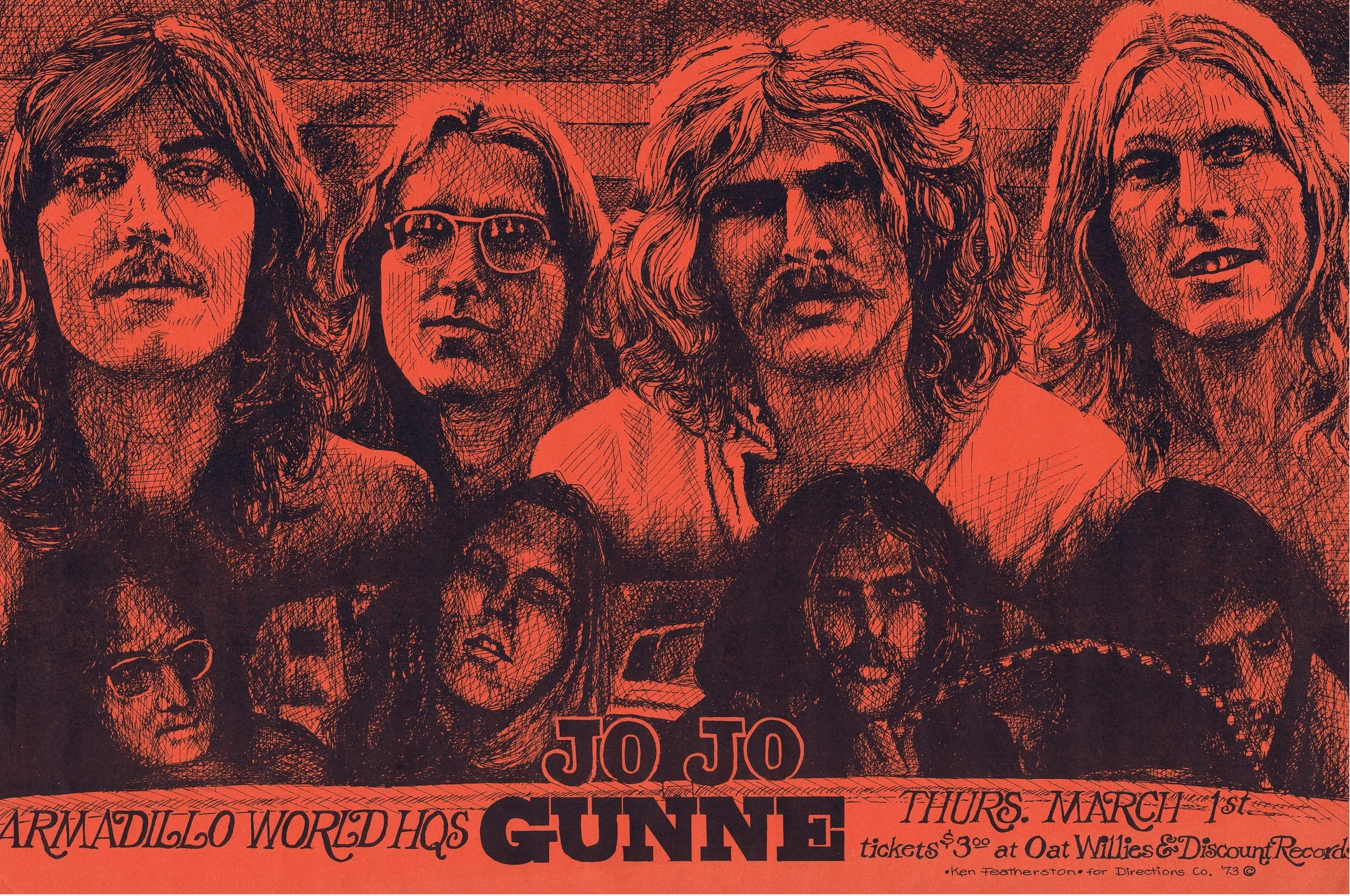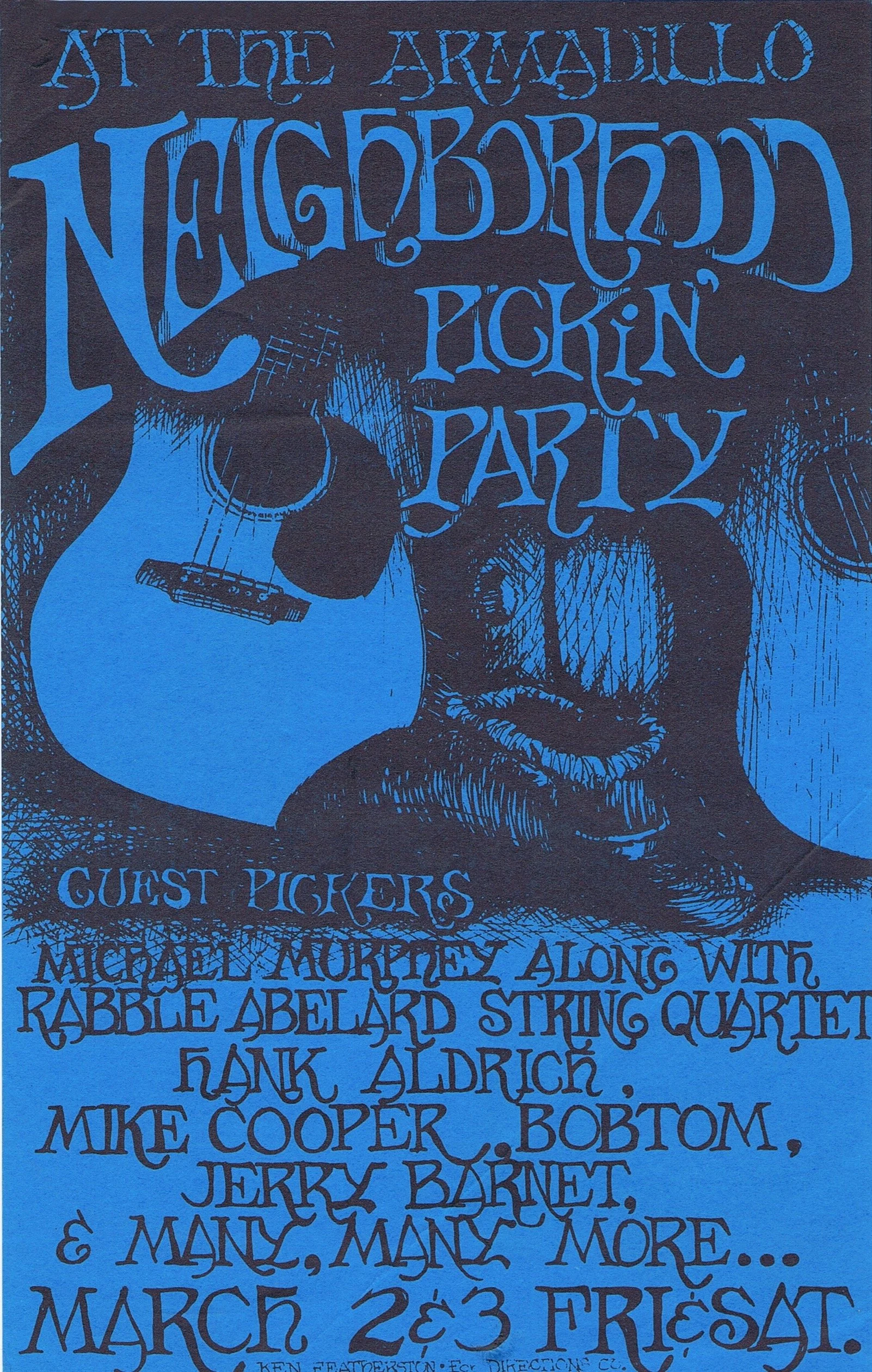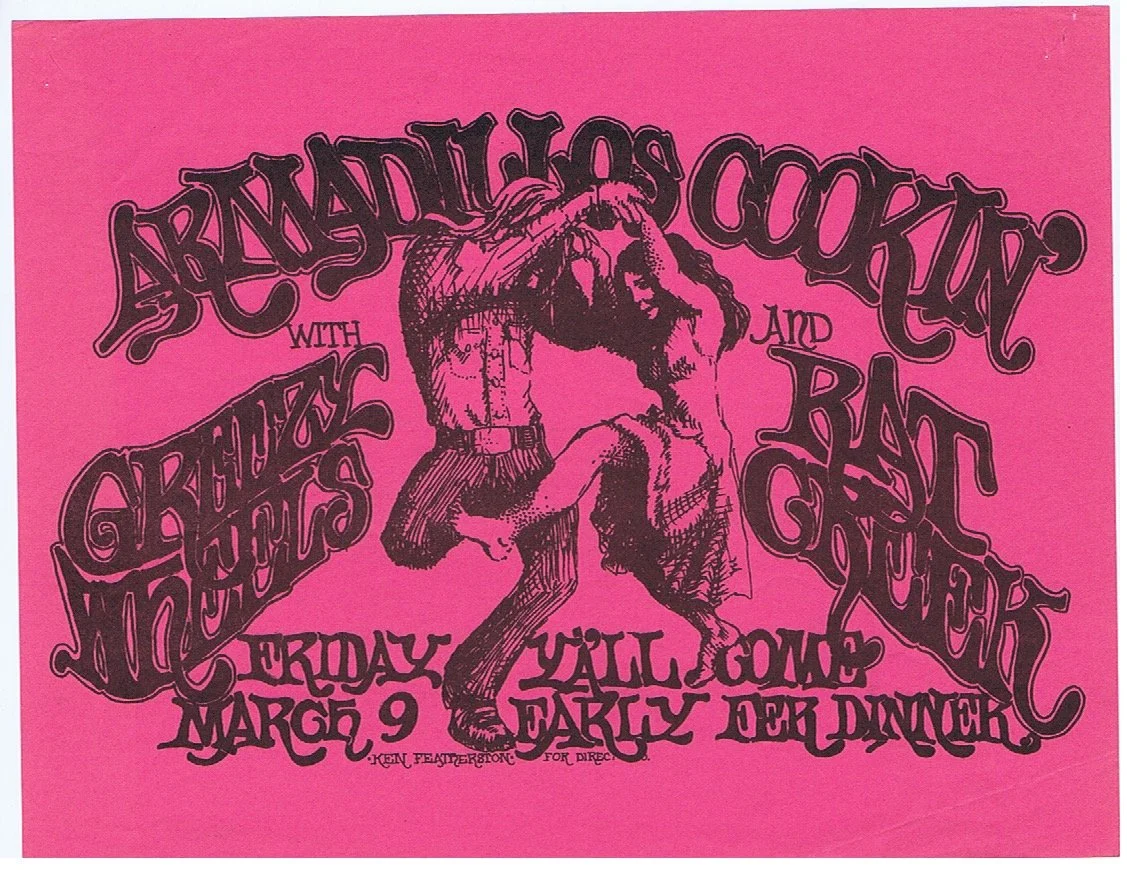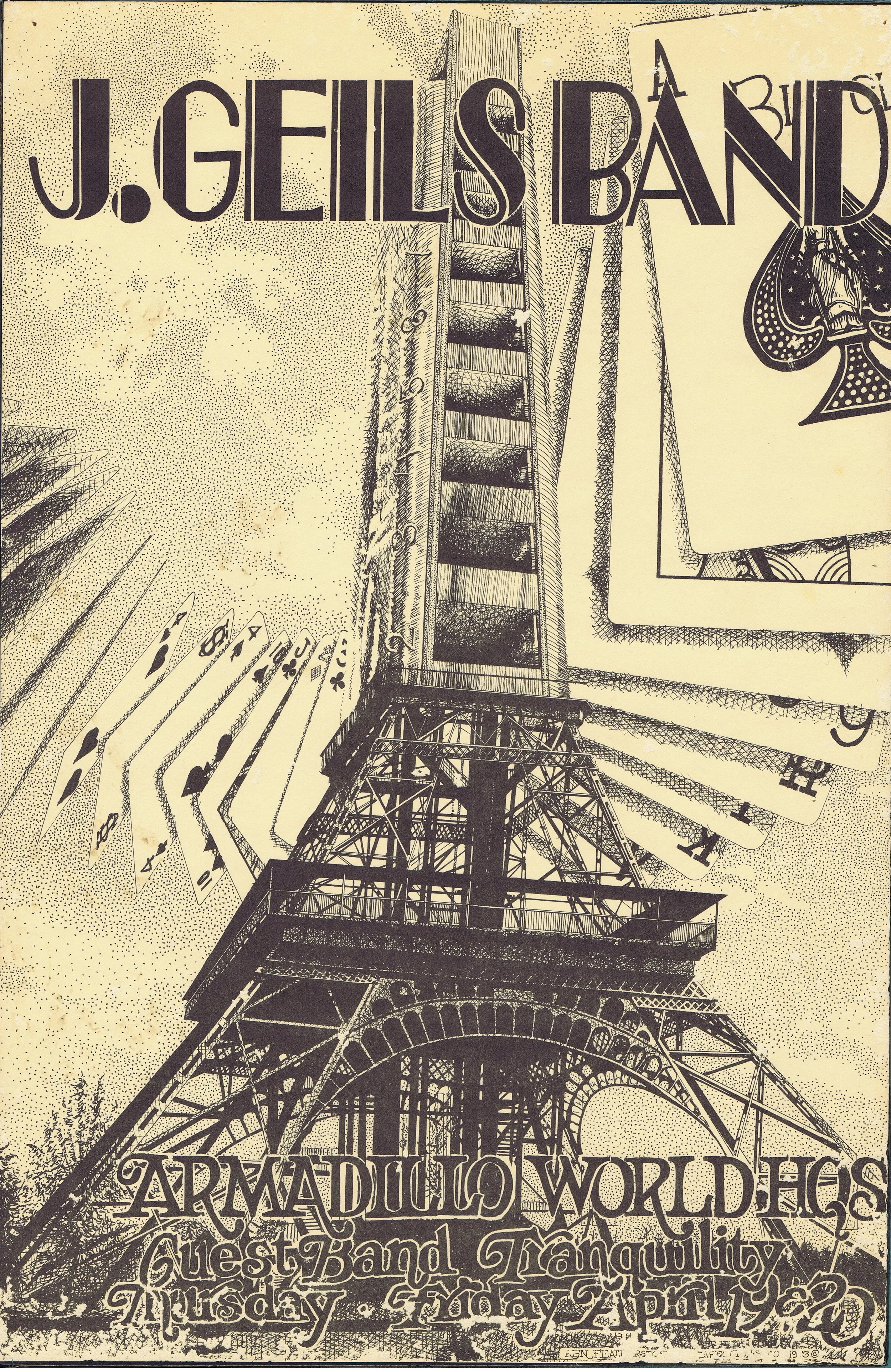Ken Featherston
Mahavishnu Orchestra concert poster: Ken Featherston, Armadillo World Headquarters, April 1972
Mahavishnu Orchestra, “You Know, You Know,” track 7 on The Inner Mounting Flame, 1972.
Video recorded in Syracuse, New York in April of 1972.
Mahavishnu Orchestra
04/05 and 04/06/1972Formed in New York City in 1971, The Mahavishnu Orchestra were pioneers in jazz-rock fusion. They were known for blending classical Indian music with jazz and psychedelic rock rhythms. The band was led by English guitarist John McLaughlin, who previously played extensively with jazz musician Miles Davis. McLaughlin was also spiritually devoted to Hinduism, which is how the name “Mahavishnu Orchestra” came to be – “Mahavishnu” meaning “Great Vishnu, an aspect of Vishnu,” after the Hindu god. The band’s original line-up played over five hundred shows between 1971 and 1973. They opened for rock ‘n’ roll groups such as YES, The Eagles, and Aerosmith, and even progressive folk and country acts such as James Taylor and The Byrds. After the original band broke up, various versions of Mahavishnu Orchestra continued to fizzle in and out into the 1980s. However, many fans agree that the band’s first line-up was the best — which is the line-up that played at the Armadillo in April of 1972.
B.W. Stevenson and Kenneth Threadgill
02/09 and 02/10/1973Louis Charles Stevenson (whose nickname was Buckwheat, or B.W.) grew up in the Oak Cliff section of Dallas, Texas and attended Adamson High School with other future progressive country artists, Michael Martin Murphey and Ray Wylie Hubbard. After graduation, Stevenson attended North Texas State University (now University of North Texas) to study voice. Quickly discovering that he did not enjoy singing opera, Stevenson moved to Los Angeles in hopes of getting signed by a record company. He was signed by RCA in 1971. Singles such as “On My Own” and his cover of Murphey’s “Five O’Clock in the Texas Morning” caught the attention of the Austin music scene. Stevenson migrated back to Texas, settling in Austin, and became a regular performer at the Armadillo World Headquarters. In 1973, he wrote the hit song “My Maria,” which climbed the pop charts and was later covered by Brooks and Dunn in 1996. Stevenson recorded several more albums, both in L.A. and in Texas, before his death in 1988. His legacy lives on as an iconic progressive country artist.
Kenneth Threadgill was a Texas folk singer and yodeler who owned “Threadgill’s Tavern” – previously a Gulf Service Station that he bought in 1933. Along with gas and food, Threadgill’s Tavern also sold beer; they were the first establishment to obtain a beer license in Austin after the repeal of Prohibition. Threadgill’s hosted open-mic nights on Wednesdays, which packed the small establishment and became popular among UT students; these gatherings ultimately helped formulate a fledgling singer-songwriter community in Austin. Janis Joplin, who frequented Threadgill’s open-mic nights, became a close friend of Kenneth Threadgill and sang weekly at Threadgill’s during her time in Austin before traveling to San Francisco in the late 1960s. She and Threadgill kept a close relationship until her early death in 1970. Kenneth Threadgill sold the restaurant to Eddie Wilson, the previous owner of the Armadillo World Headquarters, in 1981. He continued to play his folk music at the Armadillo throughout the 1970s and Threadgill’s throughout the 1980s before his death in 1987. Today, Kenneth Threadgill is renowned as a hero in Texas music; his hospitality, his passion, and his welcoming nature effectively connected people with a common love of music and inspired Texas musicians for years to come.
B.W Stevenson and Kenneth Threadgill concert poster: Ken Featherston, Armadillo World Headquarters, February 1973
B.W. Stevenson, “My Maria,” released as a single in 1973.
Gram Parsons concert poster: Ken Featherston, Armadillo World Headquarters, February 1973
Gram Parsons, “Kiss The Children,” track 8 on G.P., 1972.
Gram Parsons
02/21/1973Gram Parsons, who was born Cecil Ingram Connors II in 1946, incorporates southern country, gospel, blues, zydeco, and rock ‘n’ roll sounds into modern progressive country music of the 1970s. His upbringing in Georgia influenced his music’s southern-inspired sound, and his childhood inspiration, Elvis Presley, influenced his music’s rock ‘n’ roll base.
After dropping out of Harvard in 1966, Parsons formed the International Submarine Band in New York City. The band cultivated a heavily country-influenced rock ‘n’ roll sound, but didn’t have much success. This distinct sound, however, continued to be developed by Parsons after the International Submarine Band dissolved and he moved to Los Angeles in 1967. In California, Parsons infamously played with The Byrds; although he was with them for less than a year, Parsons was largely responsible for the band’s shift to a country sound with their album Sweetheart of the Rodeo. After he left the Byrds, he co-founded the Flying Burrito Brothers. The band grabbed the interest of several musicians, including Keith Richards of the Rolling Stones, who would become close friends with Parsons. Parsons was fired from the Flying Burrito Brothers in 1970 and embarked on a solo career where he toured extensively with EmmyLou Harris. With Harris and his band, he released his first solo album, G.P., in 1972. Following G.P., he recorded his second album, Grievous Angel.
He celebrated the release of Grievous Angel by taking a trip to Joshua Tree National Monument in California, where he consumed copious amounts of drugs and alcohol. Parsons died of morphine and alcohol overdose in Joshua Tree at the age of 26 in September of 1973. His friends stole his body and, allegedly per Parson’s request, attempted to cremate him in the Joshua Tree desert.
This show at the Armadillo World Headquarters was likely promoting his G.P. album, which debuted in the late months of 1972.
Jo Jo Gunne
03/01/1973Jay Ferguson and brothers Mark and Matt Andes formed Jo Jo Gunne in 1971. The group was created after the musicians left Spirit, a highly regarded West Coast psychedelic rock band that combined rock ‘n’ roll with jazz, blues, country and folk. The name “Jo Jo Gunne” was chosen after the Chuck Berry song of the same name. “Run, Run, Run,” their first single released from their debut album, Jo Jo Gunne, was a top ten hit song in the United Kingdom. The band was together from 1971-1974 and released a total of four albums.
Jo Jo Gunne concert poster: Ken Featherston, Armadillo World Headquarters, March 1973
Jo Jo Gunne, “Run, Run, Run,” track 1 on Jo Jo Gunne, 1972.
Armadillo Pickin’ Party concert poster: Ken Featherston, Armadillo World Headquarters, March 1973
Neighborhood Pickin’ Party
03/02 and 03/03/1973NEED INFO ABOUT THIS EVENT
Michael Martin Murphey was born in March of 1945 in Dallas. He grew up riding horses on his grandfather’s and uncle’s ranches, which would influence many of his “cowboy songs” that defined his career. In his youth, Murphey enjoyed writing poetry and listening to country and folk artists such as Bob Wills and Woody Guthrie. He went to high school in Oak Cliff with other future progressive country artists as Ray Wylie Hubbard and B.W. Stevenson and played western music at a summer camp as a teen. He went on to study Greek at North Texas State University (later University of North Texas). Murphey is often accredited with spurring the “Cosmic cowboy” movement of the 1970s. A native of Dallas, Murphey spent time in the folk scene in San Francisco in the late 1960s before moving to Austin. He’s best known for his songwriting skills and his cowboy songs. Murphey played with the Lost Gonzo Band before they went on to play with Jerry Jeff Walker in the early 1970s. His iconic album Geronimo’s Cadillac and his subsequent album Cosmic Cowboy Souvenir both went on to define the movement. He wrote songs that were covered by Johnny Cash, John Denver, Cher, and the Monkees, among others.
Armadillos Cookin’ with Greezy Wheels and Rat Creek
03/09/1973NEED INFO ABOUT THIS EVENT
Greezy Wheels played more at the Armadillo World Headquarters than any other band. They were elected as the Armadillo house band. They blended rock, country, funk, and R&B to create a distinctly local Austin sound.
Armadillos Cookin’ with Greezy Wheels and Rat Creek concert poster: Ken Featherston, Armadillo World Headquarters, 1973
J. Geils Band and Tranquility
04/19 and 04/20/1973In the mid-1960s, guitarist John Geils formed an acoustic blues band alongside bassist Danny Klein and harpist Magic Dick (born Richard Salwitz). This band, which became the J. Geils Band, became fast local favorites in their hometown of Worcester, Massachusetts. The band brought drummer Stephen Jo Bladd and vocalist Peter Wolf on board in 1967. Bladd and Wolf both loved doo wop, blues, R&B, and rock ‘n’ roll sounds, and had previously played in a rock revivalist band in the Boston area. Bladd and Wolf’s unique musical taste shaped the newly revamped J. Geils Band. They became well-known because of their exciting live performances, achieving national fame in the early 1970s. The band produced two studio albums, The J. Geils Band and The Morning After, before recording their third album, Bloodshot, in 1973. Bloodshot achieved huge commercial success, becoming the band’s first top-ten album. Their 1973 show at the Armadillo was most likely a part of their tour for this album. The J. Geils Band released eight studio albums and two live albums in the 1970s, but would go on to achieve real fame in the Eighties. Their first platinum record released in 1980, and their big radio hits “Freeze Frame” and “Centerfold” secured top spots on the charts. The band broke up in 1985.
Tranquility was founded by Terry Shaddick and Ashley Kozak in 1971. A British guitarist and songwriter, Shaddick’s songwriting was heavily influenced by groups such as Crosby, Stills, Nash & Young and The Beatles. While incorporating chordal vocal harmonies like CSNY, Tranquility’s music also reflects the creative freedom of the era, seamlessly mixing elements of psychedelia, folk, and progressive rock. Although the band originated in the U.K., they had much more commercial success in the United States. They produced two albums — Tranquility and Silver — and opened for numerous big acts such as The Eagles, David Bowie and J. Geils Band, before disbanding in 1974.
J. Geils Band, “Give it to Me,” track 9 on Bloodshot, 1973.
